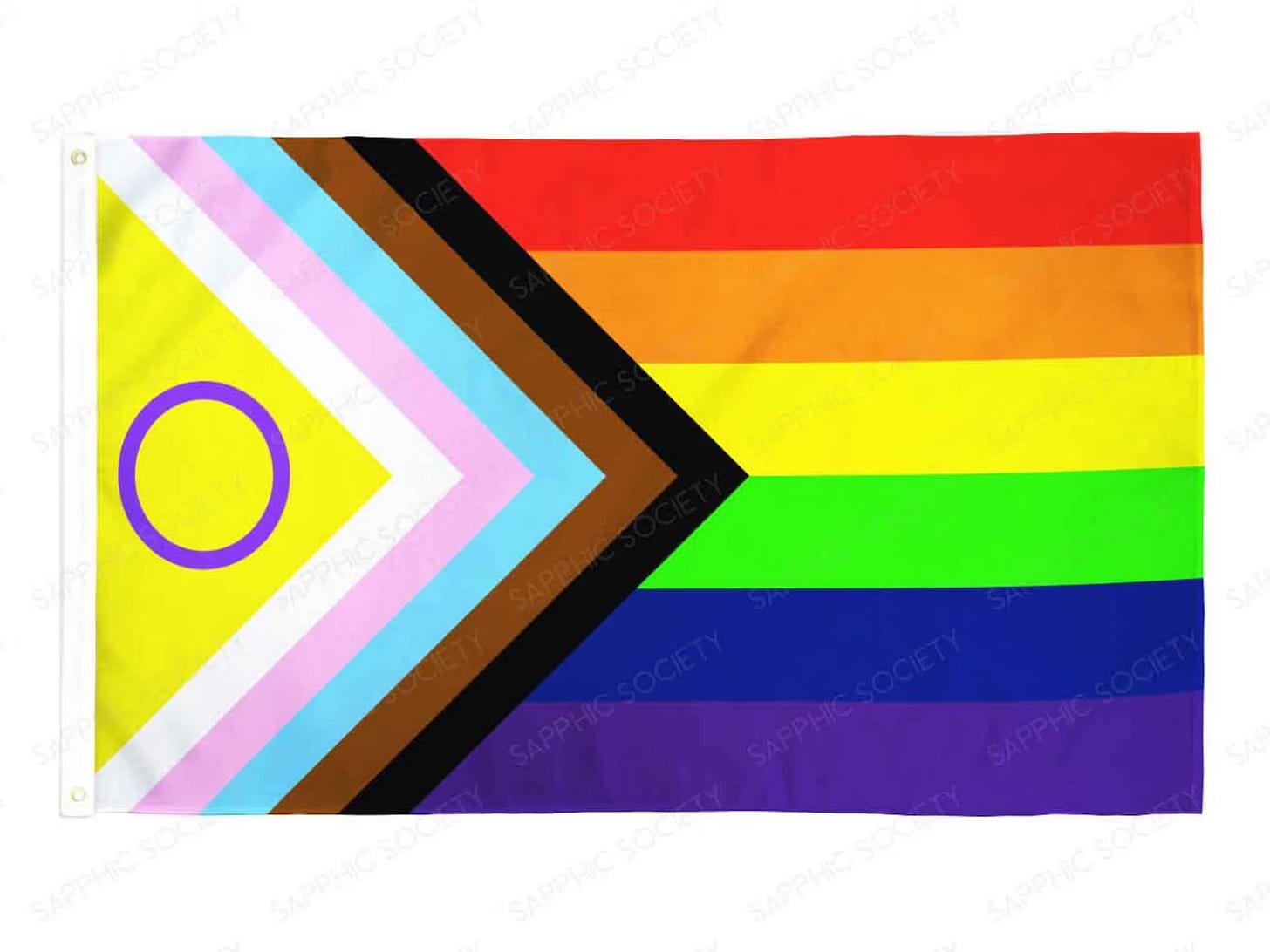Dear Friends,
Frankly, dear subscribers, Podcast #29 has been a difficult one for me. It is not for the squeamish, and focuses in on where culture and the Church collide, or embrace. I view this nexus through the eyes of the dramatist, who has witnessed more “humanity” in his fifty-five years in the theatre than he cares to share.
In some ways it is an amplification of the two previous podcasts, “The Divided United Methodist Church, Parts I & II.” Ironically, when I looked up the word “amplification” this morning in the Oxford dictionary, one definition, with an adjoining example, was: "2. the action of making something more marked or intense: you’re an actor in that you are using emotion and amplification of ideas to make your point.” That’s true, I am. And so I pray, my brothers and sisters in Christ, that I “speak in the Spirit.”
If you’ve any thoughts, your comments are always appreciated. If you find this “Love Is Love” podcast of value, please share it with someone you know. Our “publicity department” of one—yours truly—is sorely lacking.
In two weeks, I look forward to writing/preaching on “the love of God,” not the love of man. Until then, a happy 4th of July to you and your families, and don’t forget to put out the ol’ flag if you’ve got one!
With Thanks for YOU!
D. Paul
Love Is Love
What’s in a flag? Depending upon its message and its recipient, everything or nothing: it has been respected and rejected—revered or vilified, honored or burned.
Knowing well a flag’s mesmerizing power, Adolph Hitler, after being appointed Chancellor of Germany in 1933, discarded the time-honored black, white, and red imperial flag of the German Empire for the Swastika flag of the Nazi Party, Hitler having personally designed it in 1925.
Tragically, for the next two decades, accompanied by arms outstretched and a volley of “Sieg Heils,” millions of Germans saluted that flag, acquiescing to its meaning and influence, all the while denying knowledge of its pernicious message. There is such a thing as collective guilt. Acknowledgement is acceptance. Attentive parents teach their children that “ignorance is no excuse.” Nonetheless, with rare exception, the nation of Bach and Beethoven, Goethe, Thomas Mann, and Einstein followed that flag unquestioningly, ultimately to Germany’s own shame and destruction, and the destruction of six million Jews and over 50 million military and civilian souls in the process.
Counter to some countries, homage to the U.S. flag is not compulsory. A landmark decision by the U.S. Supreme Court (West Virginia State Board of Education v. Barnette, 1943) held that the First Amendment, which guarantees “the free exercise” of religion, protects students from being compelled to salute the American flag or say the Pledge of Allegiance, much to the relief of Jehovah’s Witnesses, whose religion forbids pledging to or saluting any symbols. While the vast majority of Americans proudly acknowledge Old Glory as it flies over our sport’s stadiums to the high-pitched melody of the “Star Spangled Banner,” one is free to “take a knee” in protest without fear of legal appraisal. Saluted or shunned, the “grand old flag” flies on, remaining a unifying symbol of power and influence. The iconic picture of six US Marines raising the Stars & Stripes on Iwo Jima’s Mount Suribachi in 1945 inspired our embattled nation at one of its most critical hours.
Flash forward, now, nearly eighty years, and between the multiple celebrations and parades of June’s Gay Pride Month, the oft-overlooked Flag Day, June 14, commemorating the adoption of the US flag by the Second Continental Congress on June 14, 1777, seems little more than a glossed-over historical footnote. In a dazzling display to its ubiquitous influence, the Gay Pride Flag and its alluring rainbow-colored stripes have been proudly displayed this “Gay Pride Month” of June from the streets of Wall Street to the sandy beaches of Venice, CA.
Trinity Church Wall Street, the “Progress Pride Flag.”
Lifeguard tower, Venice Beach, CA.
From government buildings to corporate headquarters, from Sunday School classrooms to our public schools, many of the flags and displays of Pride Month will remain a permanent fixture. Last year, the City Council of Alexandria, VA, voted to have one of its major crosswalks painted with the LGBTQIA rainbow stripes—permanently—arousing its citizenry to the alarming inroads that the Rainbow Pride Flag and its derivative iterations are making in the public square—literally. Whether walking on it, by it, or under it, the Pride Flag seems to be everywhere. The progressive Church, never missing an opportunity to appropriate the culture’s zeitgeist, has “rallied ‘round the pride flag” in unreserved approval and advocacy.
In two previous podcasts, the accompanying essays included pictures of the Pride Flag, one being flown on a flagpole and the other draped behind the Lord’s Table, both at different United Methodist churches located in Kansas City.
While locations and settings vary, these pictures can be duplicated in Methodist (UMC), Episcopal, Presbyterian (USA), the United Church of Christ, The Christian Church (Disciples of Christ), Lutheran (ELCA), even some Catholic and Baptist churches throughout the country. They are flown, draped, hung on ropes and wires, even worn as liturgical apparel, just in case a naive or resistant parishioner misses the point.
If at times, like me, you find yourself a little overwhelmed wondering what all the colors on the Pride Flag mean, you’re not alone. The six stripes and colors on the traditional Rainbow Pride Flag symbolize the overall LGBTQIA+ community. The original Rainbow Flag, from 1978, had eight colors, symbolizing: hot pink for sex; red for life; orange for healing; yellow for sunlight; green for nature; turquoise for magic; blue for harmony; and violet for spirit. The pink and turquoise stripes are often excluded, making it easier, symmetrically, to mass-produce the popular six-striped flag. Presently, so that no one is left out, there are over a dozen different flags that pretty much cover the sexual (or non-sexual), gender (or non-gender) waterfront, including, but not limited to: the Intersex Flag; the Asexual Flag; the Demisexual Flag; the Nonbinary Flag; Pansexual Flag, Polyamory Pride Flag, and, for the rest of us, the Straight Ally Flag.
One of the latest permutations, the “Progress Pride Flag” (see the Trinity Wall Street’s flag above), adds the colors and stripes found on the Philadelphia Pride Flag, black and brown, representing, within an inserted triangle, the intersectionality of sex/gender with marginalized, minority communities, Also new are the pink, blue, and white colors, taken from the Transgender Pride Flag.
Keeping you conversant of the last couple of years, a new iteration has gained popularity—the Intersex-Inclusive Progress Pride Flag—that adds the broad swath of yellow containing a purple circle, taken from the Intersex Flag, which celebrates “those whose bodies do not align with the gender binaries of males or females.”
Well, without exaggeration, your essayist is getting dizzy trying to keep track of it all. Little wonder our precious children as so confused. And little wonder the frequently-accommodating Pope Francis has criticized “gender ideology” as the “ugliest danger of our times.”
To simplify, allow this dramavangelist a reductive scenario: one Sunday morning, the meaning of the Pride Flag is succinctly and clearly spelled out for you when a young congregant slips into the pew in front of you wearing his Pride T-shirt, which proudly announces in duplicate, rainbow-colored lettering—LOVE IS LOVE!
That, in a nutshell, is the essential message of the Rainbow Pride Flag. Bisexuality? Love is Love! Polyamory? Love is Love!
Bestiality? “Impossible,” you say! Really? Not when thousands of nonbinary people identify with various animals (from unicorns to pandas) as their true, core identity. After all—it’s a big tent—we’re all part of the animal kingdom, and love is love!
I know … I know, we live in enlightened times (so did the pagan Greeks and Romans), and even as few a generation or two ago could see the possibility of same-sex marriage on the horizon, the thought of bestiality, let alone pederasty, is repugnant to our sophisticated Christian etiquette, so we refuse to see the pernicious messages represented by the LGBTQIA+ Rainbow Pride Flag when it is fully unfurled with all of its celebratory iterations.
This discussion is an arduous one for your “observer,” my dear brothers and sisters in Christ, and it may be distasteful to you, as it is on the aesthetic palate of many modern Christians. While the progressive Church chooses to deny the true implications of the Rainbow Gay Flag, calling them “sensational,” conservatives often choose to ignore them as well, praying the nation will miraculously pass through this perverted phase of our culture. By contrast, the Bible neither denies nor ignores these perversities, condemning them (often harshly) in the Old Testament, while clearly, albeit more obliquely, denouncing them in the New Testament under the designators of “sexual immorality,” “unnatural affections,” “orgies,” “works of the flesh,” “perversion,” and “strange flesh.” Meanwhile, as the Church has been denying and ignoring, America’s academics, sociologists, therapists, and literati have been wrestling with these issues for decades, unafraid to explore the boundaries of acceptance and inclusiveness.
Edward Albee (1928-2016), considered one of America’s greatest playwrights (who happened to be gay), addressed bestiality vividly in his play, “The Goat, or Who Is Sylvia,” which won the 2002 Tony Award for Best Play on Broadway. An acquaintance of mine, who invited my wife and I to the show, played the role of Ross Tuttle. Tuttle portrays the best friend of Martin Gray, the 50-year-old, award-winning architect who happens to fall in love with a goat. Eventually, Sally Field took over the role of Stevie, Martin’s devastated wife, who listens in disbelief as Martin tells her about the bestiality support group he has joined, pointing out that people like him seek animal company as “a coping mechanism,” and that for him, Sylvia is more than an animal; “She has a soul and reciprocates his love.” At the time of seeing Albee’s four-character “tragedy,” I thought of it as nothing more than a depressing derivative of the “Theatre of the Absurd.”
In an article entitled, Stretching My Mind, Albee has this to say about The Goat: “The play is about love, and loss, the limits of our tolerance and who, indeed, we really are.” In an interview with Charlie Rose, Albee stated, “I want everybody to be able to think about what they can’t imagine and what they have buried deep as being intolerable and insufferable. I want them to just think freshly and newly about it.”
Well, there you have it, my friends—Love is Love! And at the risk of losing a few more subscribers, I suspect if the fearless firebrand, Oxford don and Anglican evangelist, John Wesley, were preaching today, he would not hesitate to call this gender madness within the Church “A stench in the nostrils of God,” even as he called out the apostate clergy and Anglican Church of his day.
The same questions that playwright Albee tackles in “The Goat”—the limits of our tolerance—will now have to be considered by an all-embracing, inclusive Church that unquestioningly endorses the meaning of the Pride Flag in all of its permutations.
So, in the middle of this moral morass that has split the Church in half, “How then ought we to live,” how then ought you and I to respond? Join me in two weeks, July 10 (Deo volente), to explore some possible answers. One thing is certain, the true Church—Christ’s Bridegroom—whose “one foundation is Jesus Christ her Lord,” will not be shaken. And we can all be of good cheer, knowing that “Greater is He who is in us, than he who is in the world” (I John 4:4). Hallelujah!
Amen






















Share this post